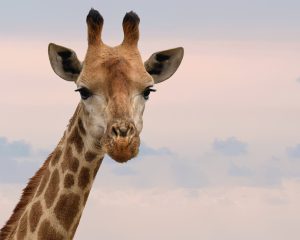Plants began to appear on Earth nearly six Billion years ago. As part of the photosynthesis process, plants produce energy and organic compounds whereby by turning water and carbon dioxide using light they produce glucose (mono-sugar), a basic form of carbohydrates. The by-product of photosynthesis is oxygen gas released into the air and used by most animals on earth for their respiratory processes. In other words, without plants, the oxygen percentage in the atmosphere would decrease significantly and the conditions on the planet would not be sufficient for sustaining life. It is the trees breathing process, especially in “Earth’s green lungs”, the rainforest regions, which is responsible for the oxygen and carbon dioxide levels in the atmosphere. The rainforest vegetation produces about 28% of the oxygen on the planet.
Plants also play a crucial role in earth’s life cycle due to their ability to produce glucose. They provide the food base for all other animals in the world, from marine phytoplankton to herbivorous animals and indirectly through to carnivores and omnivores as well.
Trees play another important role. They reduce the sun’s radiation rate (albedo). Instead of sunlight directly hitting many different surfaces and warming them, thereby accelerating atmospheric warming, trees absorb the radiation and turn it into energy. In this way, they reduce the radiation’s s impact on the atmosphere and increase the moisture percentage in the air – allowing precipitation to be produced.



Man-made deforestation processes for access to agricultural or residential land or for using wood as raw material, accelerate climate change and increase carbon dioxide levels in the atmosphere. Deforestation harms animals (about two-thirds of the world’s animal species live in the rainforest), increases flooding rates and flow, reduce humidity in the air and accelerate desertification process due to increased albedo. Because of deforestation, areas that previously had Arab climate or cold climate have dried up and become a desert.
It is estimated that each year mankind eliminates about 200,000 square kilometers of forests (and instead grows about 66,000 square kilometers of new forest). Amongst other causes, forest fires become more frequent due to drought and dryness. It is a self-destructive mechanism. The less trees there are, the more dryness there is. Dryness causes enormous forest fires that create more dryness and damage in forest areas. One-third of the world’s forests have been lost in the last 10,000 years. In approximately 200 years no tropical forests will survive at all. Clearly, life will be wiped out long before due to drastic changes in atmospheric composition, as the lack of trees means less oxygen in the atmosphere and more carbon dioxide. These will make the atmosphere toxic to animals (and humans), and restore the conditions that existed on Earth about a billion years ago. The only species likely to survive are the marine animals.
Therefore, more thought should be given to the use of wood as a raw material in the construction industry. Same is true, of finding more efficient and less land usage for agriculture. The restoration of forests (or vegetation as a whole) to the human environment, whether in urban or open areas, is also required. It is possible that if each person planted two or three trees in his life, if we protected the rainforest, if we stopped cutting down forests, we could reduce the damage to the ecological environment and atmosphere.

Growing trees as part of urban planning improves living conditions. The trees absorb some of the air pollution in their breathing and photosynthesis processes. They lower the temperature by providing shade, increase the humidity in the city and create, so-called, green lungs. Integrating trees into an urban environment is unbelievably important, especially given that most of the world’s population already lives in cities. The trees change the city, contribute to the landscape and improve the quality of life.
In many places in the world, trees become an integral part of the city itself. In addition, green belts are planted or maintained around cities. One such example, planting of trees, fields and vegetation helps keep Israel out of the desert climate strip. This can be seen along the Egyptian border. On the Egyptian side, there is a systematic elimination of vegetation by shepherds. There is almost no agriculture there. On the Israeli side, fields were planted, forestation was added, so the area that used to be desert became a green and flowering area with even more rainfall.








